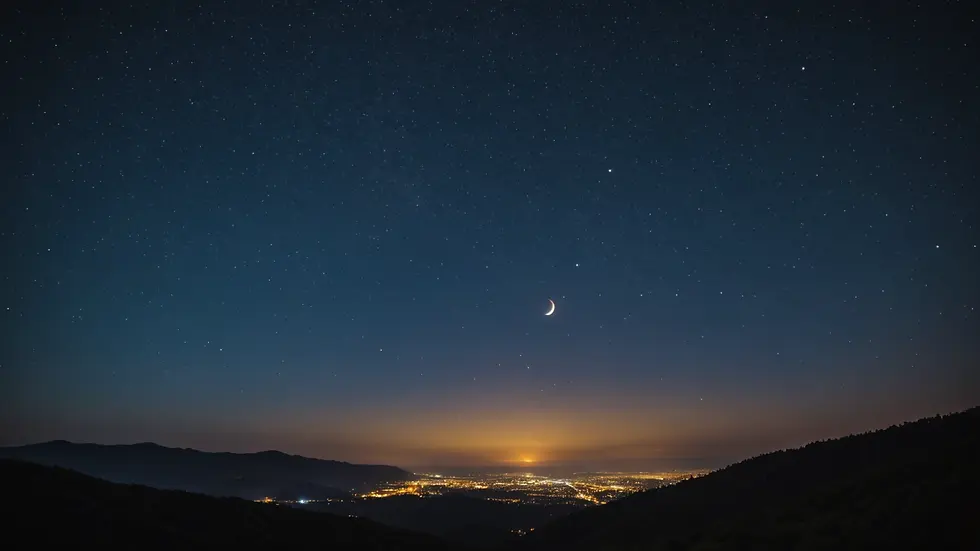The Ultimate Guide to Viewing and Understanding the Total Lunar Eclipse on March 13th, 2025
- BoldCreations ByTJ
- Mar 9
- 4 min read
Bold Creations by TJ 3/9/2025
Get ready for a breathtaking spectacle! On March 13th, 2025, the total lunar eclipse is an event that both sky enthusiasts and casual observers should mark on their calendars. Unlike solar eclipses, which can only be observed from limited locations, total lunar eclipses are visible from anywhere the Moon is above the horizon. This captivating cosmic phenomenon, known as a "Blood Moon," makes the Moon appear a stunning red, offering a visual delight for many around the world.
As we look forward to this celestial event, let's explore the fundamentals of lunar eclipses, their importance, and what to anticipate on that day.
What is a Total Lunar Eclipse?
A total lunar eclipse happens when the Earth’s shadow completely covers the Moon. This process can last several hours, providing ample time for spectators to enjoy the transformation. During the eclipse, the Moon may shift to a reddish hue, a result of Rayleigh scattering—the same phenomenon responsible for those beautiful, fiery sunsets. In fact, studies show that almost 99% of people who experience a total lunar eclipse report witnessing the vivid red color during totality.

The Path of the Eclipse
On March 13th, 2025, this remarkable event will be visible in North America, Europe, Africa, and parts of South America. Observers in North America can expect to see the eclipse begin in the early evening, making it an ideal time to gather outside with friends or family.
From the start of the penumbral phase to totality, the entire event can span approximately 3 to 4 hours. During the total phase, the Moon will radiate a deep red glow for 60 to 90 minutes, depending on your location.

How to Observe the Lunar Eclipse
To make the most out of your viewing experience, here are some simple tips:
Find a Dark Spot: Light pollution diminishes the beauty of celestial sights. Seek a location away from city lights to fully appreciate the Moon in its red glory.
Use Binoculars or a Telescope: While the eclipse can be enjoyed with the naked eye, using binoculars or a telescope brings details such as lunar craters and maria into sharper focus.
To immortalize the moment, photography enthusiasts might want to use a camera with a tripod. Long exposure can beautifully capture the stages of the eclipse.
Share the Experience: Watching celestial events feels more special when shared with others. Engage in discussions about the science and history behind lunar eclipses to enrich the experience.

The Science Behind Eclipses
A lunar eclipse occurs because of the alignment between the Earth, Moon, and Sun, forming a straight line in space. This is a perfect opportunity to deepen your understanding of different types of lunar eclipses. There are three main types:
Total Eclipses make the entire Moon turn red, creating stunning visuals.
Partial Eclipses occur when only part of the Moon enters the Earth’s shadow, leaving the rest brightly lit.
Penumbral Eclipses result in a subtle shading of the Moon, with very little dramatic change.
Total eclipses are less frequent; the next one after 2025 won’t occur until 2028, adding to the excitement of March 13th.
Cultural Significance
Lunar eclipses have held cultural significance throughout history. Many ancient civilizations interpreted these events as warnings, omens, or divine messages. For example, some Native American tribes believed that a total lunar eclipse was a powerful time for reflection and renewal.
Today, events surrounding lunar eclipses include community gatherings, educational workshops, and star parties. Engaging with others who share your interest can create a memorable experience filled with fun and learning.
Preparing for the Event
To make the most of your experience during the total lunar eclipse on March 13th, 2025, consider these practical steps:
Check the Timing: Stay informed through local astronomy websites for precise predictions. Measure your location’s timing to plan ahead and avoid missing the event.
Gather Supplies: If you plan to enjoy the eclipse outside, bring along blankets, warm clothing, and snacks for a cozy viewing experience.
Learn About the Moon: Brush up on the Moon's features, including its phases and surface details. A little knowledge can deepen your appreciation as you watch.
Plan a Viewing Event: Invite friends and family for a memorable gathering. Have some refreshments on hand while you all enjoy the wonder of the night sky.
Embrace the Cosmic Wonder
As we eagerly await the total lunar eclipse on March 13th, 2025, excitement grows around this extraordinary cosmic event. Whether you're gazing at the skies alone or sharing the experience with loved ones, this lunar eclipse promises to reveal the stunning beauty of our universe.
Prepare to witness a magnificent event that connects us with nature, history, and each other. Keep your eyes on the sky, and let's celebrate the wonders of astronomy together!









Comments